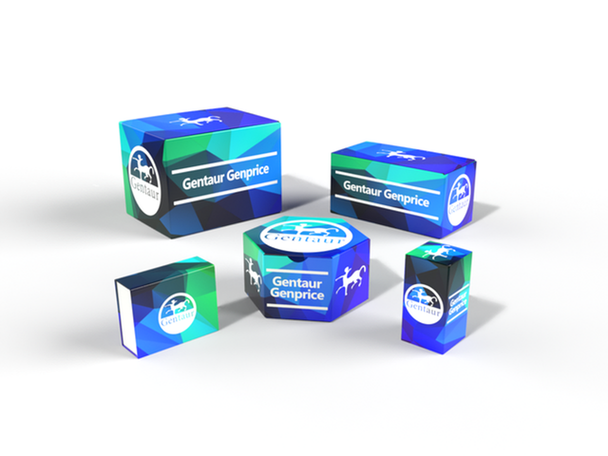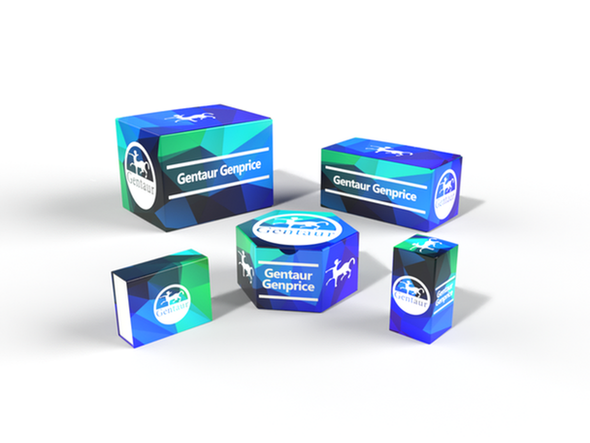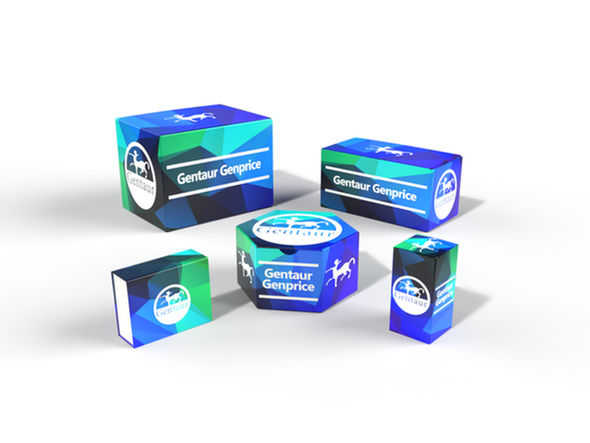Description
DcR1 Antibody | 2179 | Gentaur UK, US & Europe Distribution
Host: Rabbit
Reactivity: Human, Mouse, Rat
Homology: N/A
Immunogen: DcR1 antibody was raised against a peptide corresponding to amino acids in a extracellular domain of human DcR1 precursor.
The immunogen is located within amino acids 140 - 190 of DcR1.
Research Area: Apoptosis
Tested Application: E, WB, ICC, IF
Application: DcR1 antibody can be used for detection of DcR1 by Western blot 0.5 μg/mL. An approximate 65 kDa band can be detected. Antibody can also be used for immunocytochemistry starting at 10 μg/mL. For immunofluorescence start at 20 μg/mL.
Antibody validated: Western Blot in human samples; Immunocytochemistry in human samples and Immunofluorescence in human samples. All other applications and species not yet tested.
Specificiy: N/A
Positive Control 1: Cat. No. 1201 - HeLa Cell Lysate
Positive Control 2: Cat. No. 17-001 - HeLa Cell Slide
Positive Control 3: N/A
Positive Control 4: N/A
Positive Control 5: N/A
Positive Control 6: N/A
Molecular Weight: 65 kDa
Validation: N/A
Isoform: N/A
Purification: DcR1 Antibody is affinity chromatography purified via peptide column.
Clonality: Polyclonal
Clone: N/A
Isotype: IgG
Conjugate: Unconjugated
Physical State: Liquid
Buffer: DcR1 Antibody is supplied in PBS containing 0.02% sodium azide.
Concentration: 1 mg/ml
Storage Condition: DcR1 antibody can be stored at 4˚C for three months and -20˚C, stable for up to one year. As with all antibodies care should be taken to avoid repeated freeze thaw cycles. Antibodies should not be exposed to prolonged high temperatures.
Alternate Name: DcR1 Antibody: LIT, DCR1, TRID, CD263, TRAILR3, TRAIL-R3, DCR1-TNFR, LIT, UNQ321/PRO366, Tumor necrosis factor receptor superfamily member 10C, Decoy TRAIL receptor without death domain, DcR1
User Note: Optimal dilutions for each application to be determined by the researcher.
BACKGROUND: DcR1 Antibody: Apoptosis is induced by certain cytokines including TNF and Fas ligand in the TNF family through their death domain containing receptors. TRAIL/Apo2L is a new member of the TNF family and induces apoptosis of a variety of tumor cell lines. DR4 and DR5 are the recently identified functional receptors for TRAIL. Two decoy receptors for TRAIL have been identified and designated DcR1/TRID/TRAIL-R3/LIT and DcR2/TRAIL-R4/TRUNDD. DcR1 has extracellular TRAIL-binding domain but lacks intracellular signaling domain. It is a glycophospholipid-anchored cell surface protein. DcR1 transcripts were expressed in many normal human tissues but not in most cancer cell lines. Overexpression of DcR1 did not induce apoptosis, but attenuated TRAIL-induced apoptosis.






